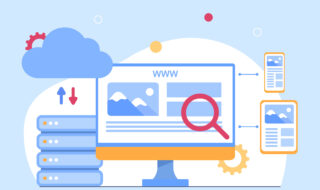Against the backdrop of digitalization and global turbulence, companies are striving to future-proof their assets. Building a mobile application has become one of the keys to becoming a future-ready company and addressing the needs of mobile-first customers.
According to the most recent statistics, more than two-thirds of the global population owns a mobile phone, with 5.34 billion unique users as of July 2022. So it’s no wonder that forward-looking businesses are looking to join the mobile arena.
However, as the competition grows, it becomes more difficult to carve a niche in the mobile market. In this blog post, you’ll find out what it takes to build a successful application and how to develop it step-by-step.
Contents
How much does it cost to build an app?
The cost of building an app is not as simple as it seems. It can vary depending on your specific needs, timeline, the number of screens, and other cost drivers.
The average cost to build an app varies by industry, but a good rule of thumb is that it should cost around $50K for a decent solution with low to medium complexity. Yet, the best way to put an estimate is to ask your mobile app development company.
What are the main cost drivers?
Although there’s a lot to go into a mobile application, some building blocks have a larger say in defining your total costs. Here’s the breakdown.
The number of mobile platforms
First and foremost, if you’re aiming for two operating systems at once, the price tag doubles. The costs will be lower if you’re starting small by developing for one platform only. As for the cost differences, it may be more expensive to build for Android due to the high fragmentation and wide range of devices. The iOS platform, on the contrary, doesn’t require you to adjust your application for a large number of mobile screens and dimensions.
The set of core features
Moreover, the choice and complexity of features will also rack up your costs. The more sophisticated they’re, the more time developers will spend on building them. Third-party integrations, however, can bring down costs as they offer ready-made features.
For example, push notifications take up around 24+ hours for each platform, while in-app messaging requires around 80+ hours. Innovative technologies such as AI and IoT are also among the most expensive ones.
The timeline

The amount of time allocated to the project also impacts the total and the project scope. Thus, a tight timeline can lead to increased costs and reduced scope to make it to the big roll-out faster. If you need to complete a task faster, you can hire additional people to work on it, but doing so will increase the project’s cost unless doing so would result in cost savings across the board.
Engagement option
The way you collaborate with your technology partner can build up or down your development expenses. Freelancers are the most affordable option but are not suitable for long-term end-to-end projects. Also, the freelance hiring model comes with high risks of little control and zero commitment.
In-house hiring refers to hiring a development team on your payroll and from the local talent pool. Although this hiring option suggests the highest level of control and the easiest management, it is quite expensive and time-consuming.
Offshore development offers a perfect price-value ratio and allows companies to tap into the global candidate pool.
Additional cost drivers
Moreover, supplemental activities such as marketing, launch campaigns, research, and others also add to the final number. You also shouldn’t skimp on testing as it ensures the long-term success of your digital product.
How to bring down your development costs
As the need for digitalization grows, companies have to innovate and flex at a higher speed. This, in turn, leads to higher costs and results in the need for better flexibility. So how can you produce great projects without breaking the bank?
Start small
Your mobile app project doesn’t have to be a big bang from the very start. We recommend choosing one platform (iOS or Android) based on your target audience and expected results. This way, you can release the solution, gather customer feedback, and iterate on the product with less investment.
However, keep in mind that both platforms differ by market and target audience. Thus, Android has the largest market share, yet offers fewer opportunities for revenue generation as users tend to choose free apps with in-app ads. iOS apps, on the contrary, dominate a few areas but allow app owners to generate more revenue from download fees.
Build an MVP
The Minimum Viable Product is a term used to describe the early product version that you can create and get some early customer feedback. It’s used in product development and business strategy, particularly when your company needs to show customers proof of concept before investing in something bigger.
A minimum viable product or MVP is usually a mobile application that allows users to interact with it but does not have any fancy features built in yet. The goal of an MVP is to test how well users like your product or service and if it meets their needs before developing more complex features. For example, an MVP for a chatting application allows users to communicate with each other but doesn’t have any add-ons such as voice messaging or video calls.
The main reason for creating an MVP is to test your idea and make sure you can deliver the promised value in terms of functionality and user experience. You can use the MVP approach when building web apps, mobile apps, games, or any other digital products where it’s crucial to show potential customers what you can do before committing more resources to development.
The final word
As companies are making a leap to digital-first organizations, mobile applications experience a swell in demand. With access to the breadth of features and services at just a swipe, mobile app development has opened the door to more flexible and faster services. Mobile applications also serve as a bridge for direct communication between customers and businesses as well as help companies grow their market reach.



